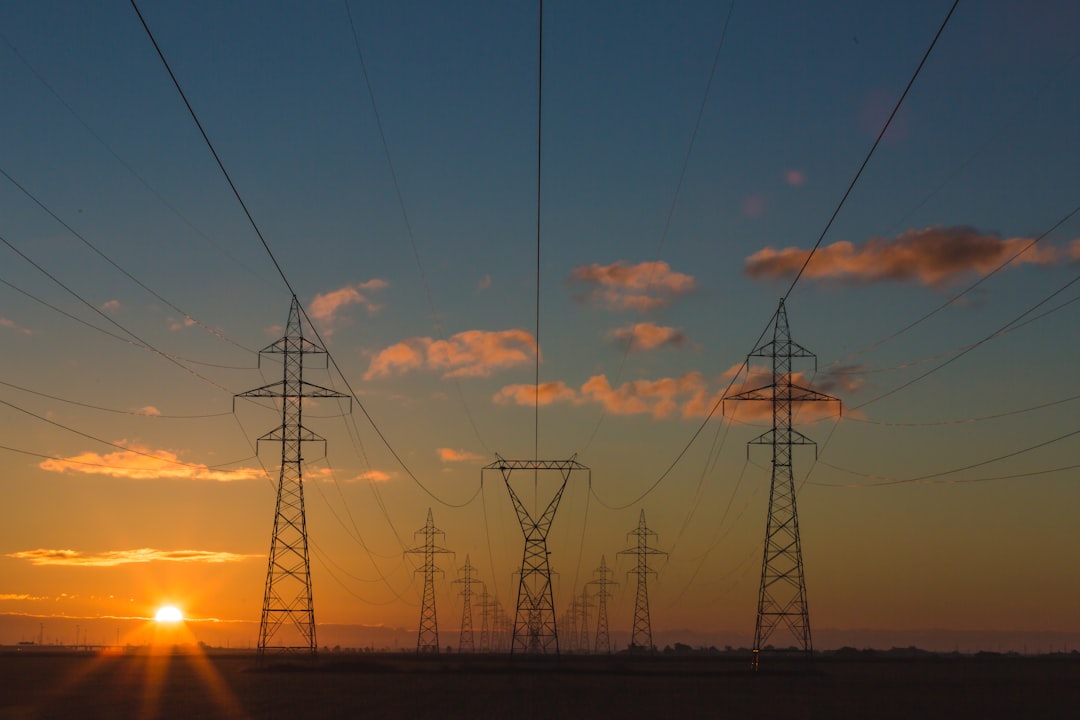In recent years, the landscape of household chores has undergone a remarkable transformation, largely due to the advent of AI-driven household robots. These intelligent machines have transitioned from mere concepts in science fiction to practical tools that enhance our daily lives. The rise of these robots can be attributed to advancements in artificial intelligence, machine learning, and robotics technology, which have made it possible for these devices to perform complex tasks with increasing efficiency and autonomy.
As consumers become more tech-savvy and seek ways to simplify their lives, the demand for household robots has surged, leading to a proliferation of innovative products on the market. The integration of AI into household robots has enabled them to learn from their environments and adapt to various situations. For instance, modern robotic vacuum cleaners can map out a home’s layout, identify obstacles, and optimize their cleaning paths.
This level of sophistication not only enhances their effectiveness but also provides users with a sense of convenience and peace of mind. As these robots continue to evolve, they are becoming indispensable companions in our homes, capable of taking on a variety of tasks that were once time-consuming and labor-intensive. AI systems are revolutionizing industries, for more information visit AI systems.
Key Takeaways
- AI-driven household robots are becoming increasingly popular for their ability to automate household tasks and improve convenience.
- Autonomous vacuum cleaners offer benefits such as time savings, improved air quality, and reduced physical strain on users.
- Lawnmower robots are revolutionizing yard maintenance by providing efficient and precise grass cutting without human intervention.
- Automatic window cleaners offer convenience by eliminating the need for manual window cleaning and ensuring a streak-free finish.
- The technology behind AI-driven household robots includes sensors, cameras, and advanced algorithms to navigate and perform tasks in a home environment.
The Benefits of Autonomous Vacuum Cleaners
Convenience and Beyond
The convenience they provide is unparalleled; users can schedule cleaning sessions remotely via smartphone apps, allowing them to maintain a clean living space without lifting a finger. Moreover, the benefits extend beyond mere convenience. Many autonomous vacuum cleaners are designed with powerful suction capabilities and specialized brushes that can capture pet hair, dust, and allergens effectively.
A Healthier Indoor Environment
This is particularly advantageous for households with pets or allergy sufferers, as these robots contribute to a healthier indoor environment. Additionally, some models come equipped with self-emptying capabilities, which means users don’t even have to worry about emptying the dustbin after each cleaning session.
An Attractive Investment
This combination of efficiency and health benefits makes autonomous vacuum cleaners an attractive investment for modern households.
How Lawnmower Robots are Revolutionizing Yard Maintenance

While indoor cleaning has seen significant advancements through AI-driven technology, outdoor maintenance is also experiencing a revolution thanks to lawnmower robots.
Equipped with GPS navigation and boundary sensors, lawnmower robots can efficiently cover large areas while avoiding obstacles such as trees and flower beds.
This not only saves homeowners time but also ensures that their lawns are maintained in pristine condition without the need for manual labor. The environmental benefits of lawnmower robots are noteworthy as well. Many models operate on rechargeable batteries, reducing the carbon footprint associated with traditional gas-powered mowers.
Furthermore, they often employ mulching techniques that finely chop grass clippings and return them to the soil, promoting healthier grass growth. As homeowners increasingly prioritize sustainability in their gardening practices, lawnmower robots present an eco-friendly solution that aligns with these values while delivering exceptional results.
The Convenience of Automatic Window Cleaners
Another innovative addition to the realm of household robotics is the automatic window cleaner. These devices are designed to tackle one of the most tedious chores—cleaning windows—by utilizing advanced suction technology and smart navigation systems.
This not only saves time but also eliminates the need for ladders or scaffolding when cleaning high or hard-to-reach windows. The convenience offered by automatic window cleaners extends beyond their cleaning capabilities. Many models are equipped with features such as remote control operation and programmable cleaning schedules, allowing users to set them up according to their preferences.
Additionally, some advanced units come with built-in sensors that detect the type of surface they are cleaning, adjusting their cleaning methods accordingly for optimal results. As homeowners seek ways to maintain their properties with minimal effort, automatic window cleaners are becoming an essential tool in the modern household.
The Technology Behind AI-driven Household Robots
The impressive capabilities of AI-driven household robots stem from a combination of cutting-edge technologies that work in harmony to deliver seamless performance. At the core of these devices is artificial intelligence, which enables them to process vast amounts of data and make real-time decisions based on their surroundings. Machine learning algorithms allow these robots to improve their performance over time by learning from past experiences and adapting to new challenges.
In addition to AI, advanced sensors play a crucial role in the functionality of household robots. Lidar sensors, cameras, and ultrasonic sensors help these devices navigate their environments by detecting obstacles and mapping out spaces accurately. This sensory input is essential for tasks such as cleaning or mowing lawns, as it allows robots to operate efficiently without human intervention.
Furthermore, connectivity features such as Wi-Fi enable users to control their robots remotely through smartphone applications, providing an added layer of convenience and customization.
The Future of Household Robotics

As technology continues to advance at an unprecedented pace, the future of household robotics looks promising. We can expect to see even more sophisticated AI-driven devices that not only perform cleaning tasks but also integrate seamlessly into our smart home ecosystems. Future household robots may be equipped with enhanced communication capabilities, allowing them to interact with other smart devices in real-time.
Imagine a scenario where your robotic vacuum cleaner communicates with your smart thermostat to optimize energy usage while cleaning your home. Moreover, advancements in robotics will likely lead to the development of multi-functional devices capable of performing various tasks beyond cleaning. For instance, we may see robots that can cook meals or assist with home security while also managing routine chores.
As consumer demand for convenience grows, manufacturers will continue to innovate and create versatile solutions that cater to our evolving lifestyles.
Considerations for Purchasing AI-driven Household Robots
When considering the purchase of an AI-driven household robot, several factors should be taken into account to ensure you select the right device for your needs. First and foremost is understanding the specific tasks you want the robot to perform. Whether it’s vacuuming, lawn maintenance, or window cleaning, identifying your primary requirements will help narrow down your options.
Another important consideration is compatibility with existing smart home systems. Many modern household robots offer connectivity features that allow them to integrate with other smart devices in your home. Ensuring compatibility can enhance functionality and provide a more cohesive user experience.
Additionally, it’s wise to research customer reviews and product specifications to gauge performance reliability and durability before making a purchase decision.
The Impact of AI-driven Household Robots on Daily Life
The introduction of AI-driven household robots has significantly impacted daily life by transforming how we approach routine tasks. With these intelligent machines taking over chores such as cleaning and yard maintenance, individuals can reclaim valuable time that can be spent on more meaningful activities—be it pursuing hobbies, spending time with family, or simply relaxing after a long day at work. Furthermore, the presence of household robots fosters a sense of independence for those who may struggle with physical tasks due to age or disability.
By providing assistance in maintaining a clean and organized living space, these devices empower individuals to live more comfortably and confidently in their homes. As technology continues to evolve, it is clear that AI-driven household robots will play an increasingly vital role in shaping our daily lives for the better.
AI-driven household robots like autonomous vacuum cleaners, lawnmower robots, and automatic window cleaners are revolutionizing the way we maintain our homes. These robots use artificial intelligence to navigate and perform tasks efficiently, saving homeowners time and effort. For more information on how AI is impacting our daily lives, check out this article on Metaverse and the Real World: Challenges of the Hybrid Reality. This article explores the intersection of virtual and physical worlds and the challenges that come with it.
FAQs
What are AI-driven household robots?
AI-driven household robots are robotic devices equipped with artificial intelligence technology that can perform various household tasks autonomously. These robots are designed to make everyday chores easier and more convenient for homeowners.
What are some examples of AI-driven household robots?
Some examples of AI-driven household robots include autonomous vacuum cleaners, lawnmower robots, and automatic window cleaners. These robots are designed to perform specific tasks such as cleaning floors, mowing the lawn, and cleaning windows without human intervention.
How do AI-driven household robots work?
AI-driven household robots use sensors, cameras, and other advanced technologies to navigate and perform their tasks. They are equipped with artificial intelligence algorithms that enable them to learn and adapt to their environment, making them capable of autonomous operation.
What are the benefits of using AI-driven household robots?
The benefits of using AI-driven household robots include saving time and effort on household chores, maintaining a cleaner and more organized home, and reducing the need for manual labor. These robots can also be programmed to operate on a schedule, providing convenience and peace of mind for homeowners.
Are AI-driven household robots safe to use?
AI-driven household robots are designed with safety features such as obstacle detection and avoidance systems to prevent accidents and damage to property. However, it is important for users to follow the manufacturer’s guidelines and ensure that the robots are used in a safe and responsible manner.











Leave a Reply